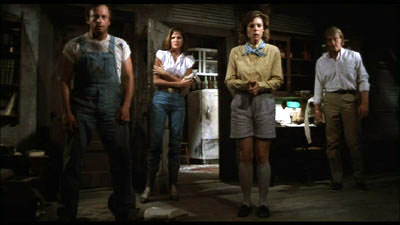 | 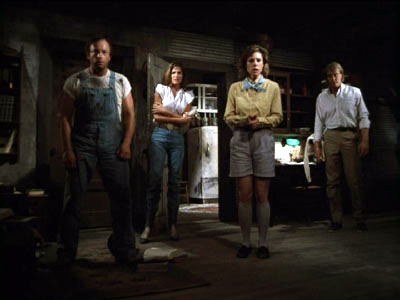
|
| Here we have only redundant image above and below. On a 4:3 TV the image is not zoomed, so the only reason for formatting would be the "confusion" with black bars. | |
Translation from the Portuguese version - sorry for the bad grammar and/or spelling
The main reason to change movies when transferring them to video is the removal of "black bars". This process might mean the cropping up to almost half the image. Some people say that certain versions are acceptable or even preferable because they show "more image". This page intends to show that that reasoning is also, in general terms, ill informed. There's only one reason to prefer altered versions: not accepting "black bars". To say that one prefers the fullscreen version because it shows "more image" is trying to justify an option already taken.
"More image" is an inadequate expression in this context, because the film is defined by the format chosen by the filmmakers, while shooting it. What's above, below or behind the camera is not relevant for the film. Below it's shown that it's not rare that the process of "matte" removal would reveal "mistakes" and compromise an illusion.
There are four possible scenarios on what formatting to fit a TV screen is concerned, depending on the original source. Examples to all are supplied below.
|
|
||||||||||
N.B.: the presentation of the comparisons suggests the use of a couple of 4:3 televisions. This option is motivated only by practical reasons, since widescreen images - with the exception of «The Usual Suspects» - where grabbed from versions enhanced for 16:9 sets, i.e., wider than the 4:3 images presented.
 | 
|
| Here we have only redundant image above and below. On a 4:3 TV the image is not zoomed, so the only reason for formatting would be the "confusion" with black bars. | |
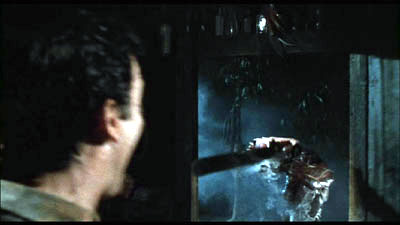 | 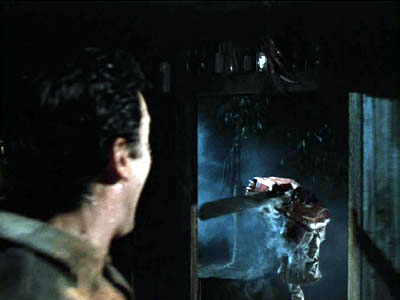
|
| This is a slightly different case: even though the image is dark, the fullscreen version shows the arm that controls the fake torso (below right). (This is probably unnoticeable after overscanning). | |
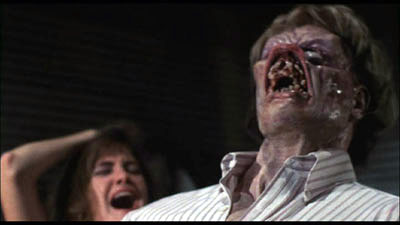 | 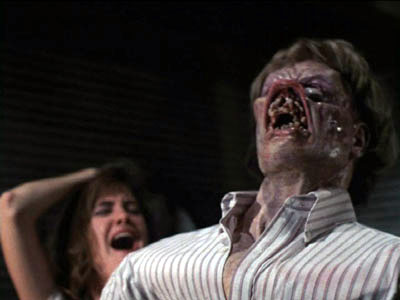
|
| Here we got "more image" but we also get to see that the "monster" only exists from above the chest! | |
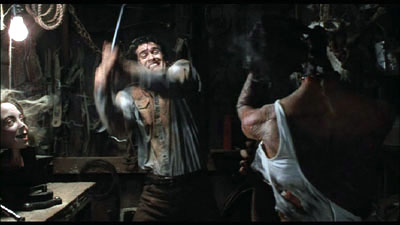 | 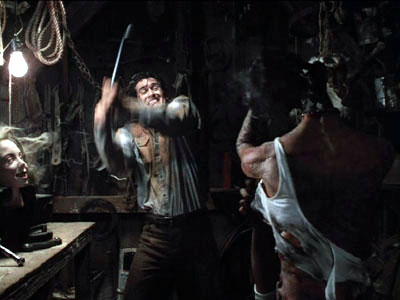
|
| We can see the arm of the "fake shemp" operator on both versions, but on the unmatted image we get to see the white sleeve of his shirt. | |
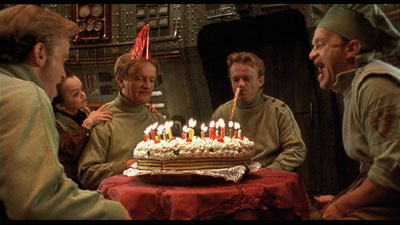 | 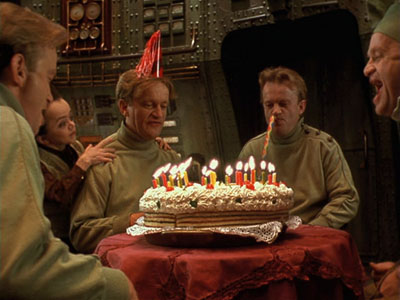
|
| Shots with digital effects are normally created on a ratio similar to the intended projection format. In this case there's no image to add. On the other hand, this film appears to have been shot totally hard matted, probably at 1.66:1 (though the projection ratio is 1.85:1). | |
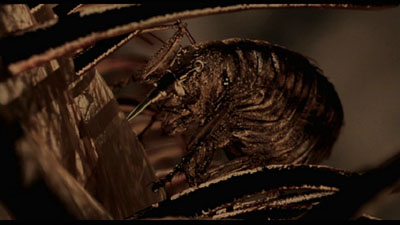 | 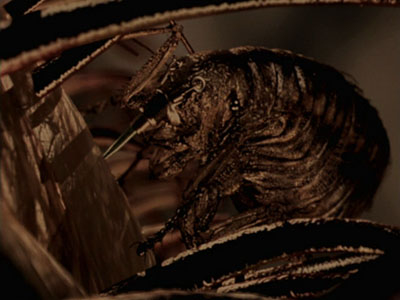
|
| A film in this aspect ratio will not show great losses, but the composition is always rendered unbalanced. | |
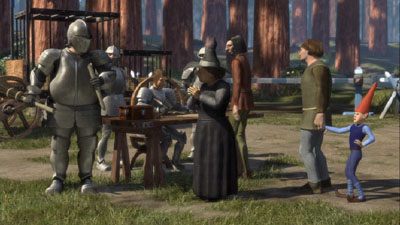 | 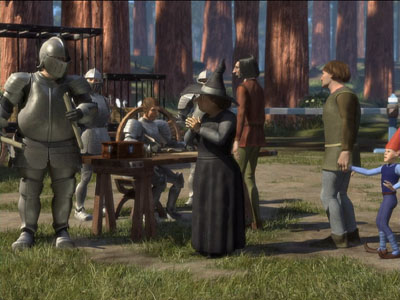
|
| An animated film is drawn to the projection format, hence there's no left overs, above and below, like with a live action film. Digital animation is the same, but in both cases it's common - especially with Hollywood films - to use a ratio slightly higher (probably 1.75:1). This means that the side cropping is slightly decreased by the use of a bit of extra image, above and below. | |
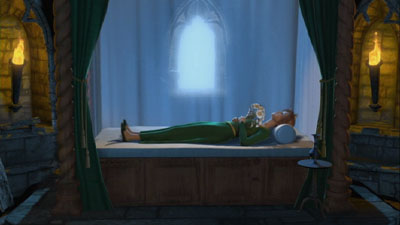 | 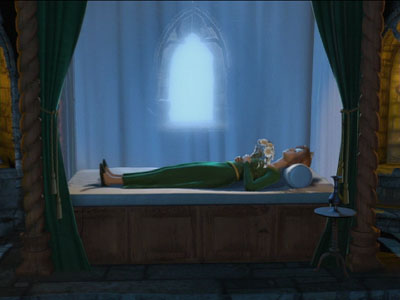
|
| Like you can see from this example, even minor cropping can destroy a composition. | |
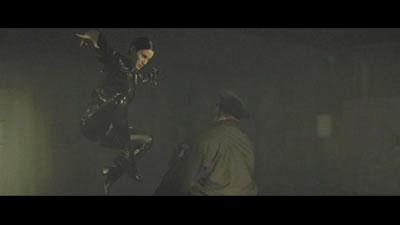 | 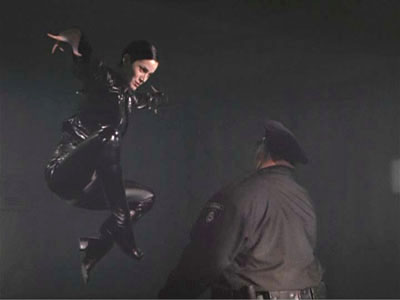
|
| Here, I do believe that the telecine operator considered image on the sides to be "dead space" and decided to crop the actors instead of using more image above and below. | |
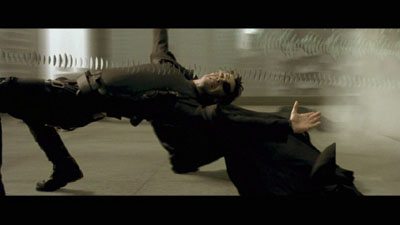 | 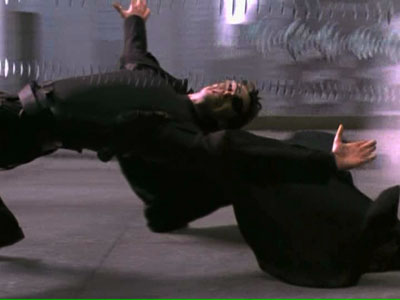
|
| For the reasons previously mentioned digital FX shots imply noticeable cropping. This varies according to the screen area used by the digital composition and to the position of the actors on the frame. | |
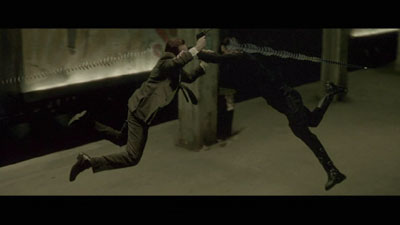 | 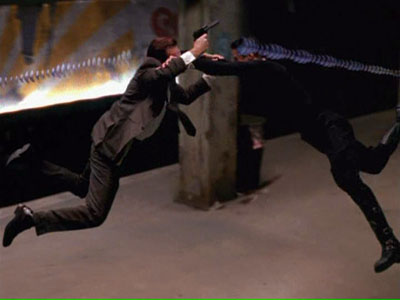
|
| The actors are almost whole, but the composition suffers, with the bullet's trails being cropped. | |
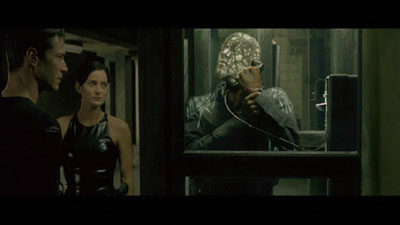 | 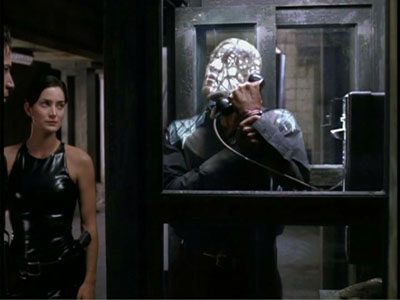
|
| With TV overscan you won't even see Keanu Reeves' nose. | |
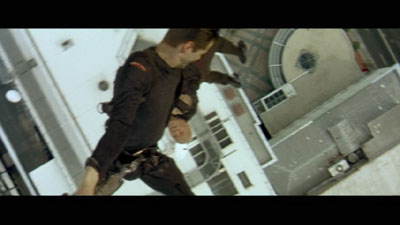 | 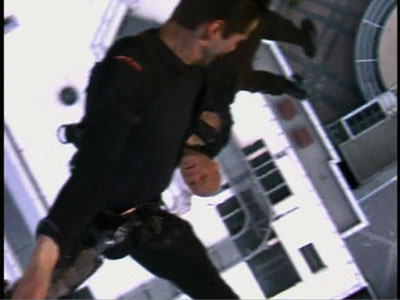
|
| Here you don't gain anything. In this shot the digital background was probably created on a 2.35:1 ratio (or the telecine person was in a hurry). | |
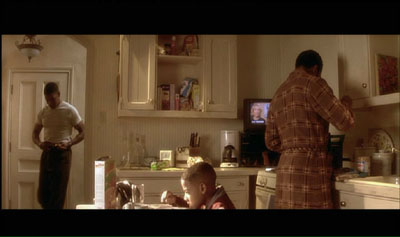 | 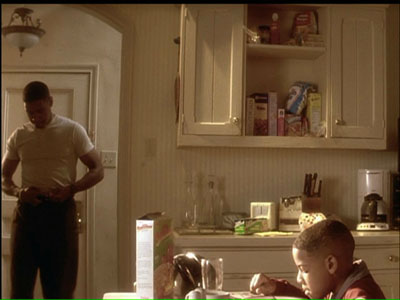
|
| Since there's no extra image, a "real" scope film always suffers a lot. The theory that directors nowadays don't use the whole scope frame is more of a mantra used by people that see a lot of TV (or burn a lot of money on pan and scanned videos) than anything else. It's true that some films are not very well composed, but you can only judge that by looking at them, not at a 4:3 extraction. Just don't believe on something just because someone said it. | |
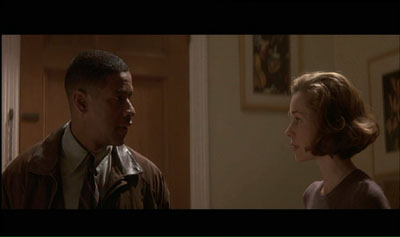 | 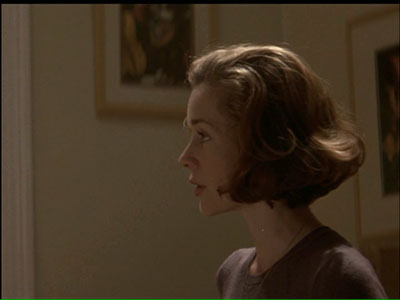
|
| All two shots are converted into one shots. Sometimes the scanner is dragged from one side of the screen to the other, trying to frame the actor speaking. In this case, the shot was broken in two: you never see Embeth Davidtz when Denzel Washington is speaking or the other way round. | |
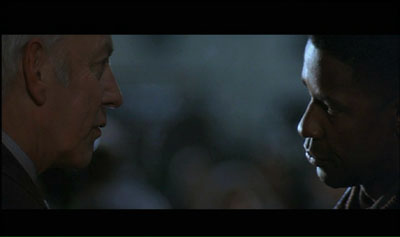 | 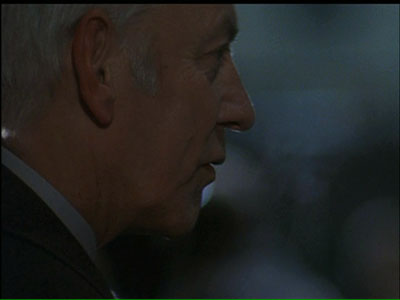
|
| Likewise. | |
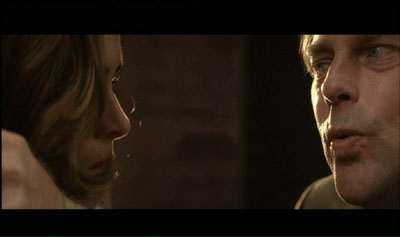 | 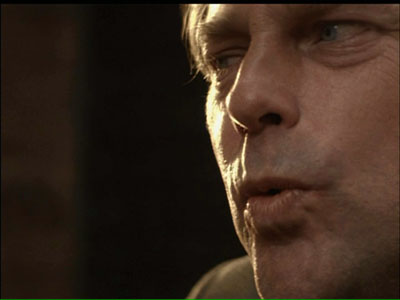
|
| This is a very tense scene. But on the 4:3 version we're forced to look at the assailant's lips (brrr) and we don't even see the actress' frightened face! | |
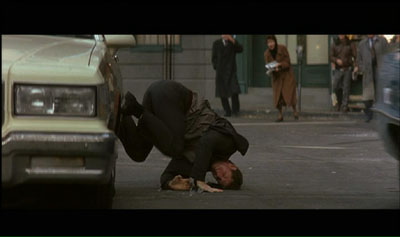 | 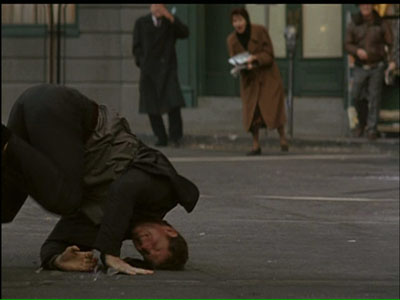
|
| This is almost funny: we don't see the man hitting a car on the left or the other car moving on the right. The few people that prefer a fullscreen and spend money on digital sound systems probably also don't care about the way the sound is unbalanced. The sound effect appears near the screen centre but they should hear it from the extreme left, off screen, if the sound would also be "formatted". | |
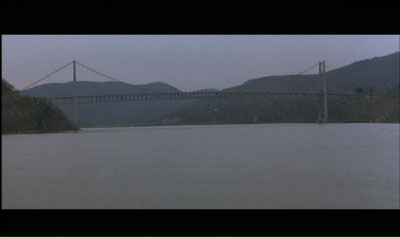 | 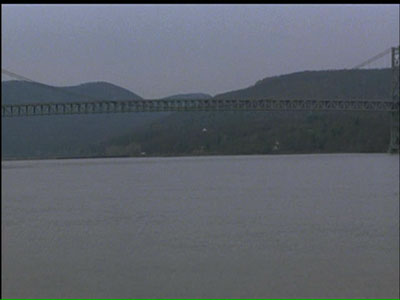
|
| A very nice view. | |
«Evil Dead II» - edition Anchor Bay, USA © 1987 Rosebud Releasing Corporation
4:3 shots from «The Matrix» where taken out from making ofs and might not match exactly the official fullscreen release.
«La Cité des Enfants Perdus» - edition Columbia Tristar, USA © 1995 Claudie Ossard Prod., Lumiére, Studio Canal +, France 3 Cinéma, Elias Querajeta, Tele München
«Shrek» - edition Dreamworks, USA © 2001 Dreamworks LLC
«The Matrix» - edition Warner Bros., USA © 1999 Warner Bros.
«Fallen» - edition Warner Bros, Europe D3 © 1998 Turner Pictures Worldwide, Inc.
All the other shots were taken from the fullscreen versions available on the DVDs listed above.